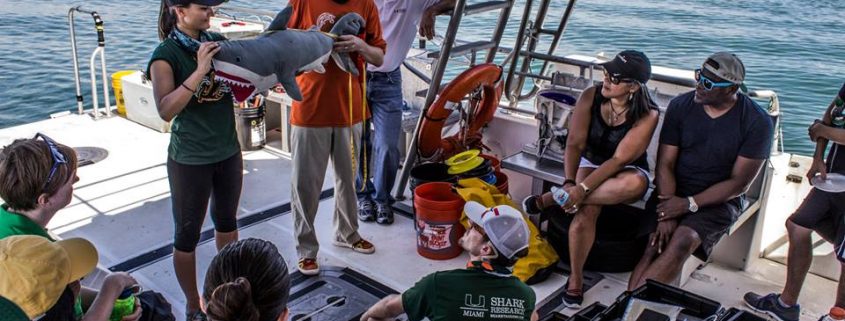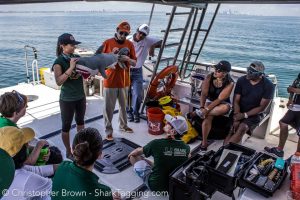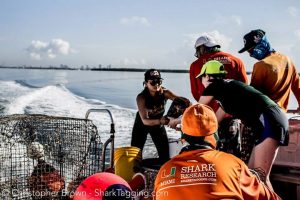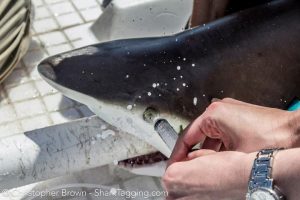Shark Tagging With Steve Brodie Charter
By Alison Enchelmaier, RJD Intern
Friday morning couldn’t come fast enough. It felt like forever since I had been on a tagging trip and I was chomping at the bit to get started. The crew arrived an hour early to load gear and everyone seemed to be in a genial mood as we hauled drumlines and bait. Today our new intern, Julia Whidden, was joining us for her first trip! Just as we were loading up, we were joined by our group of UM citizen scientists.
We headed out to Stiltsville, a series of stilt houses that reside offshore in Biscayne Bay, and began to set our gear. We added a new procedure to our protocol on this trip, fish traps. Our fish traps are large, square, portable structures made of mesh meant to catch fish without a rod and reel. We use these traps to see what fish live in the areas where we catch sharks. We placed two fish traps into the water and let them soak while we fished for sharks. After the traps were released, we set our drumlines into the water and let them soak. While we waited, Dr. Hammerschlag explained the importance of shark research and conservation and our citizen scientists learned about the tasks they would be participating in on the trip.
After an hour, we returned to check on our lines. Early in the day, we don’t often get a shark on the first line so imagine our surprise when we caught a shark on our first line, and it was a blacknose to boot! Most blacknose sharks are small; adults can grow to about 4 ft long. We don’t catch them often, so this find was a real treat! There was no time to spare as we had another shark on the second line, this time a 172 cm (~5.6 ft) female blacktip. Our citizen scientists helped the team measure, gather blood and fin samples, and tag the shark before releasing her back into the water. The next shark we encountered was another blacktip, female as well at 163 cm (~5.3 ft).
As we pulled in the last line the sound of thunder indicated it was time to head back to shore. On the way back to the dock, we retrieved the fish traps and identified the fish we caught. Between both traps there were five fish in total and three different species of bony fish. The species we caught were planehead filefish, a saucereye porgy, and two lane snappers.
All in all, it was a wonderful day! Thank you to our citizen scientists for joining us on a great trip!







Leave a Reply
Want to join the discussion?Feel free to contribute!